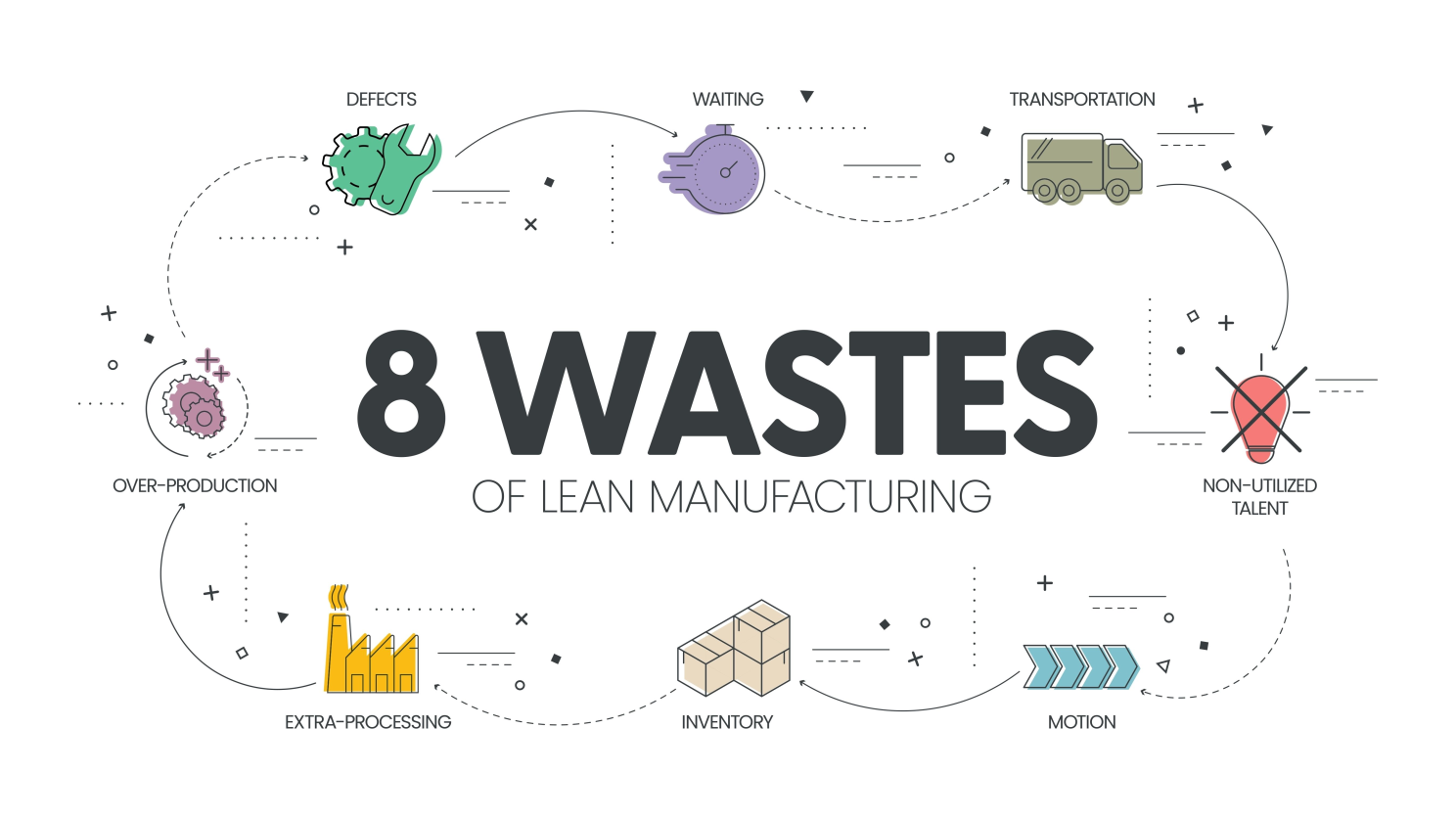Hello again and thanks for returning to Connected Concrete!
Today we are taking a dive into Motion waste as we continue to explore the 8 wastes of Lean Manufacturing principles. So far we have covered Waiting, Transportation and Un-Utilized Talent as sources of waste.

8 Sources of waste according to Lean Manufacturing principles
Motion waste is considered to be any motion in the plant that does not add customer value. As such, it is likely one of the most prevalent of all wastes recognized by Lean principles. Yet, it remains largely unseen; maybe because Motion waste is hiding in plain sight.
"Never confuse motion with action"
- Benjamin Franklin
Consider all of the motion that occurs on a precast plant floor and ask yourself: How much could be eliminated? The amount is mind boggling!
For instance:
- Walking into the office to determine what is on today's production schedule;
- Searching for tools that are not nearby;
- Going to the lab to collect compression test results;
- Preparing reports that can be generated automatically;
- Searching for reports;
- Walking the plant to determine production status;
- Bending, twisting or moving unnecessarily;
- And too many more activities to be listed here!
Why all the commotion about motion?
Three reasons:
- Employee health and safety
- Plant productivity
- Opportunity to engage employees
1) Employee health and safety
Usually, the biggest problem with motion is that even small repetitive motions can hurt a person over time. Consider carpal tunnel syndrome. Who would have thought that typing a lot could cause injury? Motions required in a plant environment tend to produce even greater risk. So, it is important to eliminate actions like bending, lifting and twisting by redesigning work processes where possible.
2) Plant productivity
Small inefficiencies add up. In the report, Lean and mean: How does your supply chain shape up?, McKinsey & Company estimates that warehouses studied were 20-50% less efficient than they could be due to Motion waste. The report stated:
"... we found that it is the cumulative effect of dozens of slightly sub-optimal processes and the lack of lean mindset."
They added that some fundamental changes in the way the facilties were organized and managed could reduce the inefficiencies by about half. Wow!
3) Opportunity to engage employees
In last week’s edition, I wrote about the opportunity cost of not utilizing employee talent to its fullest potential. One of the side effects of not engaging your employees is they can begin to feel disengaged and unmotivated. People tend to experience more job satisfaction when they know they are helping to build and improve the business as part of a team effort. (Working on the business in addition to working in the business as entrepreneur, Dave Todaro, owner of the excellent software development firm, Ascendle, once put it to me.)
Finding ways to reduce motion and/or repetitive tasks at the labor level is a perfect opportunity to engage employees. After all, who knows the job better than the person doing it? And, it sends a powerful message of respect and inclusiveness to ask people for their opinions. So, engaging employees to identify Motion waste and to suggest improvements starts the plant on the path of addressing two wastes, Non-utilized talent and Motion.
I’m sold. So how do we go about addressing Motion waste?
First, engage employees to consider the problem and develop proposed solutions.
Second, develop standard operating procedures around the solutions that are agreed upon as the proper course of action. Lean practices dictate that the resulting procedures should be communicated in the plant with large signs and graphics that are easy to understand. (This will be covered in a future post.)
Third, rearrange workstations where appropriate. It is likely that the suggestions that produce the new SOPs will involve rearrangement of the physical space to minimize Motion waste. Take these suggestions to heart and invest the time required to do this. It will pay for itself many times over in the long run.
Where can I learn more?
If you are looking for a good primer on Lean Manufacturing practices, consider Lean Production Simplified by Pascal Dennis. As its billing states, it is a plain language guide to the lean production system written for the practitioner by a practitioner.
Our Idencia system is a tool that can help minimize Motion and other forms of waste because it automates tasks. For instance:
- Our integration with ForneyVault by Forney, LP delivers compression test results right into your Idencia account. No more back and forth to the lab or manual entry from system to system (both Motion wastes).
- QC reports are automatically generated, saving the report prep time (Waiting waste) and the trip to the office to prepare them (Motion waste).
Of the seven specific examples of Motion waste I provided in the beginning of this edition, can you guess how many that the Idencia system addresses?
Next up, Inventory waste.
Waiting and Motion are the most prevalent wastes, but Inventory is the most expensive. Next week we will explore how expensive it really is.
Thank you and catch you again next week!
Jeff
This blog is part of a LinkedIn Newsletter series by Jeff Pollock, CEO of Idencia. To get the latest of what he’s writing, be sure to subscribe to his newsletter Connected Concrete.

Mar 5, 2024 11:45:00 AM


Comments